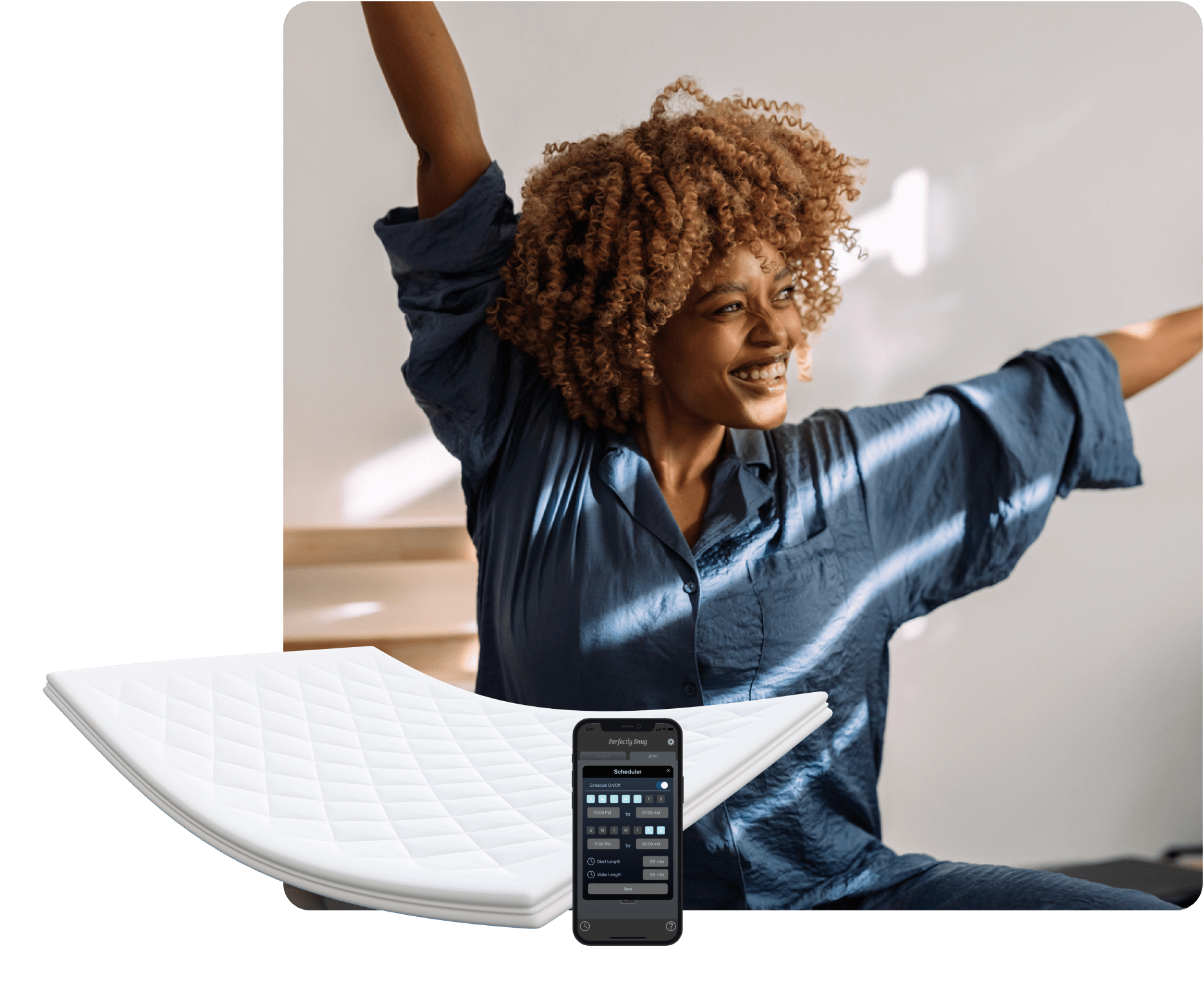Introduction
Definition of ASMR
You've likely encountered the term "ASMR" floating around the internet, perhaps while scrolling through videos of whispering voices or delicate hand movements. But what exactly is this peculiar phenomenon?
ASMR, or Autonomous Sensory Meridian Response, refers to the pleasurable tingling sensation that some individuals experience in response to specific auditory, visual, or tactile triggers. These triggers can range from gentle whispering and tapping sounds to the simple act of watching someone perform mundane tasks with attentive care.
Brief overview of its popularity for sleep improvement
While ASMR has gained significant popularity in recent years, with countless videos and channels dedicated to it, many people have also begun to explore its potential as a natural sleep aid.
The relaxing and calming effects of ASMR have led many insomniacs and those struggling with sleep issues to incorporate it into their bedtime routines, hoping to drift off into a peaceful slumber. But is there any scientific evidence to support the claims that ASMR can improve sleep quality?
Let's delve into the fascinating world of ASMR and explore what the research has to say.
Understanding ASMR
What is ASMR?
At its core, ASMR is a deeply personal and subjective experience. Some individuals report feeling a pleasant, tingling sensation that begins at the scalp and travels down the spine and limbs in response to certain triggers.
This sensation is often accompanied by a sense of relaxation, calmness, and even euphoria. However, it's important to note that not everyone experiences ASMR, and the triggers that elicit these sensations can vary greatly from person to person.
Different triggers and their classifications
ASMR triggers can be broadly categorized into three main types: auditory, visual, and tactile.
Auditory triggers may include whispering, soft speaking, gentle tapping, or even the sound of someone turning pages in a book.
Visual triggers can encompass attentive movements, such as someone carefully folding origami or brushing their hair.
Tactile triggers, on the other hand, involve the sensation of light touch, such as having someone gently run their fingers through your hair or trace patterns on your skin.
Within these broad categories, there are countless sub-triggers that can elicit ASMR responses. For example, some individuals may find the sound of someone eating crunchy foods or the sight of someone organizing items to be particularly soothing. It's a highly personalized experience, and what triggers ASMR in one person may not necessarily have the same effect on another.
The Science of ASMR and Sleep
Neurological underpinnings of ASMR
While the scientific understanding of ASMR is still in its early stages, researchers have begun to unravel some of the neurological mechanisms that may underlie this phenomenon.
One study conducted by researchers at the University of Sheffield used functional magnetic resonance imaging (fMRI) to examine the brain activity of individuals while they experienced ASMR. The results revealed that ASMR activated specific regions of the brain associated with emotional arousal, reward processing, and social cognition. Interestingly, the researchers also noted a decrease in activity in the areas of the brain responsible for processing auditory and visual stimuli during ASMR experiences.
This finding suggests that ASMR may involve a form of attentional control, allowing individuals to focus on specific sensory inputs while tuning out others.
How ASMR affects the brain's relaxation pathways
Another intriguing aspect of ASMR is its potential impact on the brain's relaxation pathways. Several studies have linked ASMR experiences to a reduction in heart rate and increased levels of oxytocin, a hormone associated with bonding, trust, and relaxation.
These findings hint at the possibility that ASMR may activate the parasympathetic nervous system, which is responsible for promoting rest and relaxation. Additionally, researchers have observed similarities between the brain activity patterns observed during ASMR and those seen during mindfulness meditation practices.
Both experiences appear to engage regions of the brain involved in attentional control, emotion regulation, and self-awareness, suggesting that ASMR may share some of the stress-reducing benefits associated with meditation.
Studies and research on ASMR and sleep quality
While research on the direct relationship between ASMR and sleep quality is still in its infancy, several studies have provided promising insights. One study conducted by researchers at the University of Sheffield explored the effects of ASMR on sleep onset latency (the time it takes to fall asleep) and sleep quality.
The results revealed that participants who experienced ASMR reported significantly shorter sleep onset latency and improved sleep quality compared to those who did not experience ASMR. Another study published in the journal PLOS ONE examined the physiological responses associated with ASMR. The researchers found that ASMR videos elicited a significant decrease in heart rate and an increase in skin conductance levels, indicating a state of relaxation and decreased physiological arousal.
These findings suggest that ASMR may have the potential to promote better sleep by reducing physiological arousal and stress levels. However, it's important to note that the research on ASMR and sleep quality is still relatively limited, and more rigorous studies are needed to fully understand the relationship between these two phenomena.
ASMR for Sleep Improvement
Personal anecdotes and experiences
While scientific research can provide valuable insights, personal anecdotes and experiences can also shed light on the potential benefits of ASMR for sleep. Many individuals who struggle with insomnia or other sleep-related issues have reported finding solace in ASMR videos and audios.
For example, Sarah, a 28-year-old graphic designer, shared her experience with ASMR: "I've always had trouble sleeping, and I used to toss and turn for hours before finally drifting off. But ever since I discovered ASMR, my bedtime routine has become so much more relaxing. I put on my favorite whispering videos, and within minutes, I can feel my body and mind unwinding. It's like someone is gently lulling me to sleep."
Another individual, Michael, a 36-year-old software engineer, described his experience with ASMR for sleep: "I used to rely on sleep medications, but they often left me feeling groggy and sluggish in the morning. ASMR has been a game-changer for me. Whether it's the sound of someone turning pages or the sight of someone brushing their hair, I find these triggers incredibly soothing. I've even started creating my own ASMR playlists to listen to at bedtime."
These personal stories highlight the potential power of ASMR in promoting relaxation and improving sleep quality for those who experience it.
Common ASMR triggers used for sleep
While ASMR triggers can be highly individualized, there are some common triggers that are often used for sleep purposes.
Gentle whispering, soft-spoken narratives, and the sound of tapping or scratching are among the most popular auditory triggers. Visual triggers like watching someone slowly and methodically perform tasks like folding laundry or applying makeup can also be soothing for many individuals.
It's worth noting that some ASMR triggers, such as crunchy or loud sounds, may be less conducive to sleep and could potentially disrupt the relaxation process. Finding the right triggers that work best for your personal sleep needs may require some experimentation and exploration.
How to incorporate ASMR into a bedtime routine
Incorporating ASMR into your bedtime routine can be a simple and enjoyable process. Here are a few tips to help you get started:
- Explore ASMR videos and channels: There are countless ASMR videos and channels available on platforms like YouTube, TikTok, and various ASMR-dedicated websites. Take some time to explore different styles and triggers to find what works best for you.
- Create a soothing sleep environment: Prepare your sleep environment by minimizing distractions, dimming the lights, and ensuring a comfortable sleeping temperature. This will help you fully immerse yourself in the ASMR experience.
- Use headphones or earbuds: While not always necessary, using headphones or earbuds can enhance the auditory experience and block out external noises, allowing you to fully focus on the ASMR triggers. Here's the rest of the article:
Debunking Myths and Misconceptions
Common misconceptions about ASMR
As with any emerging phenomenon, ASMR has been subject to its fair share of myths and misconceptions. One common misconception is that ASMR is a form of sexual or fetish-related practice. However, this is a gross oversimplification of the experience.
While some individuals may find certain ASMR triggers to be mildly arousing, the majority of ASMR enthusiasts report that their experiences are purely non-sexual in nature. Another misconception is that ASMR is a form of hypnosis or mind control. This is simply not the case.
ASMR is a deeply personal and subjective experience that relies on the individual's ability to engage with and respond to specific triggers. It does not involve any form of external control or manipulation.
Evidence-based clarification of these misconceptions
Several studies have aimed to address these misconceptions and provide a more accurate understanding of ASMR.
A study published in the journal PLOS ONE analyzed the responses of ASMR enthusiasts and found that the majority of participants reported experiencing ASMR as a non-sexual and relaxing phenomenon.
The study also noted that the experiences were not consistent with the characteristics of hypnosis or trance states. Additionally, research conducted by the University of Winnipeg explored the motivations and experiences of ASMR viewers.
The findings revealed that the vast majority of participants engaged with ASMR content for relaxation, sleep aid, and stress relief purposes, rather than for sexual or fetishistic reasons.
By addressing these misconceptions with evidence-based research, the scientific community is helping to shed light on the true nature of ASMR and dispel any stigma or misunderstandings associated with it.
Conclusion
Summary of ASMR's role in improving sleep quality
The research and personal experiences surrounding ASMR have provided compelling evidence of its potential to improve sleep quality for those who experience it.
From reducing physiological arousal and promoting relaxation to activating the brain's reward and emotional processing pathways, ASMR appears to offer a unique and natural approach to enhancing sleep.
While the scientific understanding of ASMR is still in its early stages, the available research suggests that it may be a valuable tool for individuals struggling with sleep issues.
By incorporating ASMR triggers into their bedtime routines, many have reported shorter sleep onset latency, improved sleep quality, and a more restful night's sleep.
Final thoughts on the future of ASMR research
As the fascination with ASMR continues to grow, so too does the need for further research into this intriguing phenomenon. Future studies should aim to explore the neurological and physiological mechanisms underlying ASMR in greater depth, as well as its potential therapeutic applications.
Additionally, longitudinal studies examining the long-term effects of ASMR on sleep quality and overall well-being could provide valuable insights into its efficacy as a sleep aid. While ASMR may not be a panacea for all sleep-related issues, it offers a promising and accessible avenue for those seeking natural and non-pharmacological solutions.
As the scientific community continues to unravel the mysteries of ASMR, we may find ourselves drifting off to sleep with the soothing sounds and sensations of this captivating phenomenon.


